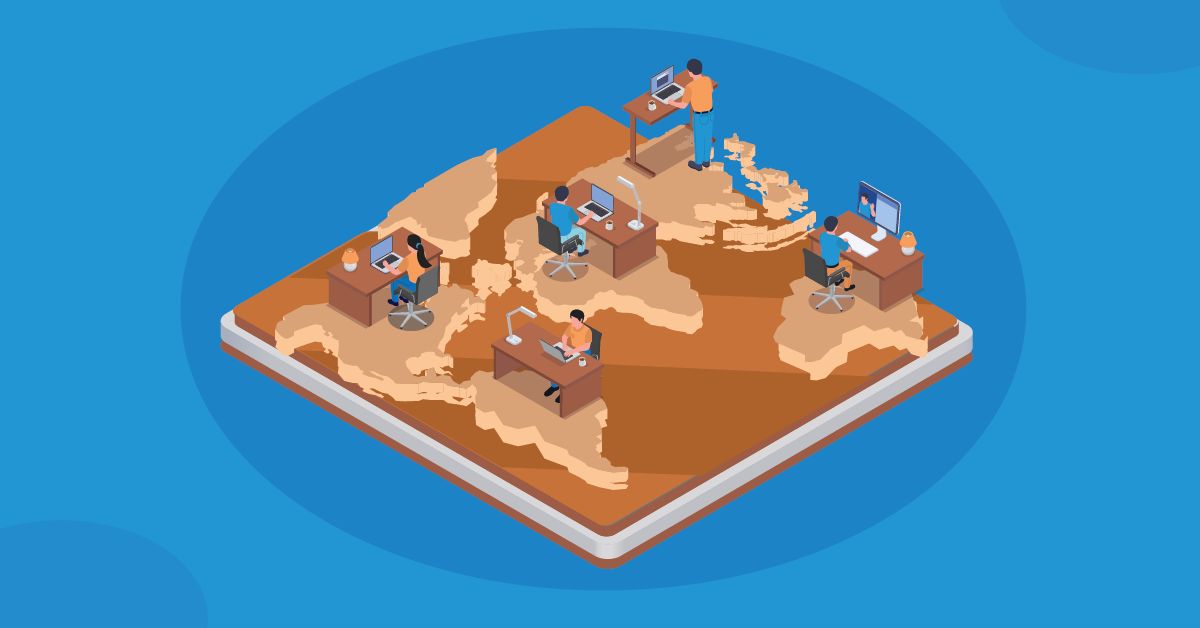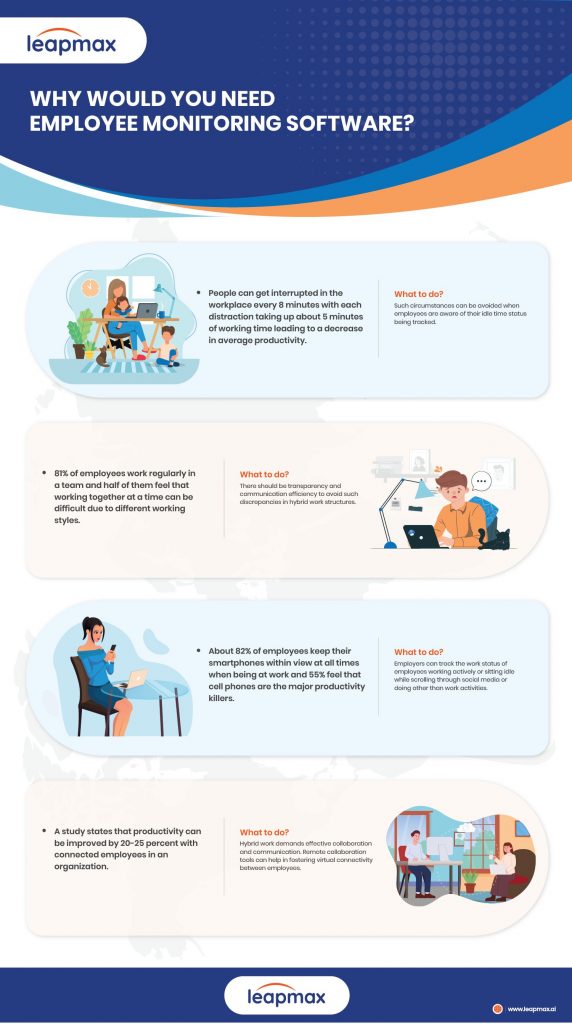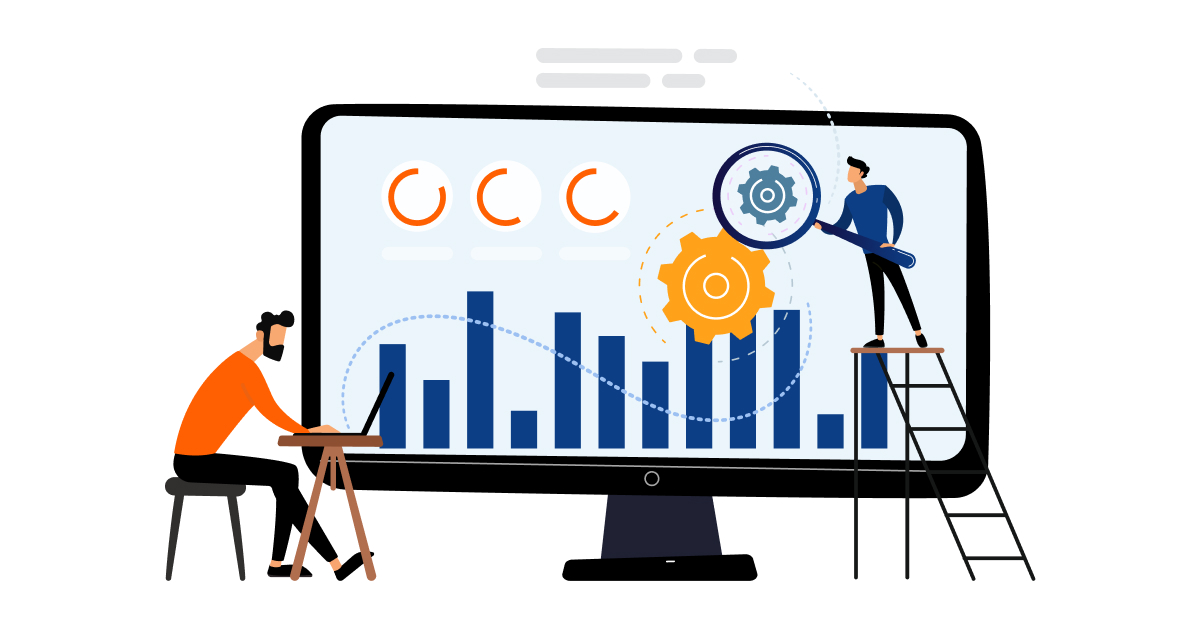Posted on: January 2, 2022
2024 Employee Monitoring Software Guide- Everything You Need To Know!
Get started
Employee monitoring has become a buzzword in every industry since the pandemic hit businesses. Since organizations started adopting remote work as a new normal, leaders have become more conscious of ensuring that their remote employees are working when they work from home.
That is why more and more companies understand the need to enable such a tool for employee monitoring that can foster regular operations and protect their resources. However, employee monitoring software is mistakenly associated with micromanagement and Big Brother at the office, which can lead to trust issues among remote workers.
If we deep-dive into the subject, we can understand that technology like activity monitoring software is not synonymous with intrusiveness. Still, worried about the policies and employee resentment? This is why we want you to have clarity on everything you need to know about aspects such as employee monitoring and how it can benefit you.
Look at some of the vital information your business needs regarding employee monitoring.
Table of contents
What is Employee Monitoring Software?
Whether your workforce is operating remotely, hybrid, or in-office, an employee monitoring system is an empowering tool to keep track of work hours. Activity monitoring software clearly differentiates between productivity hours and sitting idle status by providing detailed insights into what staff is doing and how they perform.
Employee monitoring software provides insights into how agents work in their daily activities, whether remotely working or from the office. The activity data includes application usage and web activity tracking with employees’ login hours.
Modern time-tracking tools possess comprehensive analytics based on employee work behavior that determines the flow of productivity. Today’s organizations that understand the potential of going digital know that employee monitoring is merely an indicator for collecting instant data that contributes to productivity, work efficiency, and staff engagement.
When used appropriately and completely transparently, employee activity monitoring software can connect people, processes, and technology even when teams become hybrid.
3 Benefits of Using Employee Monitoring Software
Employee monitoring software was rescued when businesses went remote while bearing the lockdown consequences. But how did that affect employees and impact their productivity? That is simple! If you want to know how your employees perform, capture their daily work-related and non-work-related activities. Many reasons could influence a business’s ability to enable remote worker tracking tools within a company.
Let’s look at some of the facts supporting the following reasons that would ensure your decision to implement remote workplace tracking.
1. To Detect and Avoid Wastage of Time
The internet has undoubtedly been the biggest contributor to time-wasting activities. Employees can face massive distractions while completing their tasks in the office or working from home.
Workforce management tools can help detect such a decline in productivity by tracking employees’ idle status and notifying supervisors about it. To get more insights into what employee monitoring offers, check out the stats below and what role employee monitoring tools will play.

2. Increase Productivity and Accountability
Productivity compliance is not solely based on how employees perform when they are in office. Most of the time, supervisors do not know what their workers are doing at home. The trick is they could access unlimited devices at home, which companies can’t control.
Moreover, managers cannot control or ban smartphones, or else they will face rebellion. Time tracking tools make it easy for supervisors to get detailed analytics on how much time certain employees spend sitting idle and will help them take instant action.
3. Data and Network Security
Data breaches were the biggest threat companies faced or were vulnerable to during remote work. These breaches could occur due to employees being inactive or negligent at work. The possible threats would be the leakage of the company’s confidential client and customer information.
Remote monitoring software with data and network protection capabilities can help detect such threats through network monitoring.
(A process of analyzing all the incoming and outgoing traffic in an organization’s network)
This monitoring also involves monitoring staff’s screens for access to unproductive or non-work-related social sites, which could become potential threats to the business’s safety.
Legal and Ethical Aspects Related to Employee Monitoring Software
Employee monitoring is not about being active or going the extra mile in micromanagement. This should never be the goal of any organization that wants to try its hands-on hybrid work monitoring. Remote work tracking should include employee monitoring ethics revolving around workplace productivity and making your workforce accountable. No personal issues or malicious practices could be part of efficient and reliable employee monitoring.
Therefore, your business needs thorough research on the types of workforce monitoring software that covers what, when, where, how, and who of the incidents taking place at work. Laws about employee monitoring could differ from country to country or even on state levels. Some places require organizations to notify staff before monitoring them, whereas others refuse.
However, they can inform them regarding some monitoring strategies. It also depends on whether the employee has devices or IT infrastructure, including hardware and software; companies have the right to monitor the usage of their devices, data, and assets provided.
Businesses cannot use employee information gathered from time tracking and activity monitoring for personal purposes. This also implies work-from-home monitoring policies, under which companies can bear the consequences of hindering employee privacy.
2 Steps to Ensure Credibility With Employee Monitoring Software
We have covered almost all aspects of employee monitoring and how it can benefit businesses in the long run. For better results, consider some steps to ensure credibility among employees, even when using productivity tracking software.
1. Be Transparent With Your Decision of Enabling EMS
There is no better way than to be honest about what you are going to do. Especially when it comes to employee monitoring, it is advisable to provide your strategies and ideas behind implementing remote worker tracking tools.
Give clarity to your employees on what you will do with the information you will get from the metrics provided by workforce monitoring software. Allow your employees to ask questions they would have in mind. Prepare a list of benefits that you think would help you in giving answers to your employees.
2. Research the Options With Required Features
Alright! You have observed the pros and cons of employee monitoring, and now it is time to enable it. We understand that different types of employee monitoring software are available in the market. Once you make the decision, there is no going back. Making the right choice can be overwhelming.
Thus, before spending a lot of time shopping around, you can begin by creating a checklist of features in monitoring software that your company will need:
- Real-time monitoring
- Employee productivity
- Website blocking
- Data leakage prevention
- Time tracking
- Apps and website usage tracking
- Remote team collaboration
- Login hours monitoring
- Categorize activities as productive and unproductive
Now, it is your time to make the best decision by choosing efficient monitoring software that will be great for agents, employees, and back-office operations, the right fit for your industry, and address privacy concerns.
Conclusion
Ensure that your employee monitoring initiatives address all your concerns related to productivity and protect employee privacy. Strictly check the types of employee monitoring software that will benefit all teams and departments across the organization.
Be aware of the legal procedures regarding employee monitoring in your country and state. Choose the right employee monitoring software for your remote workforce management initiatives.







